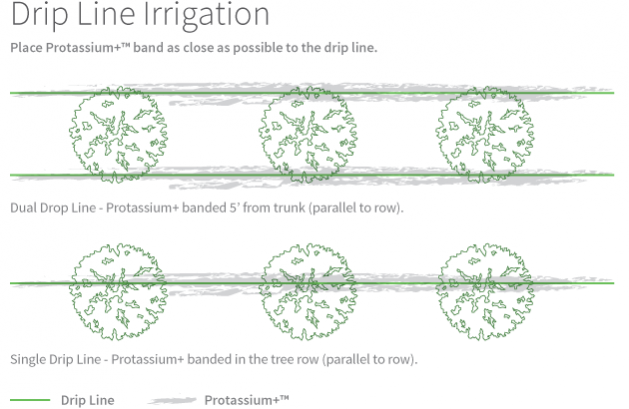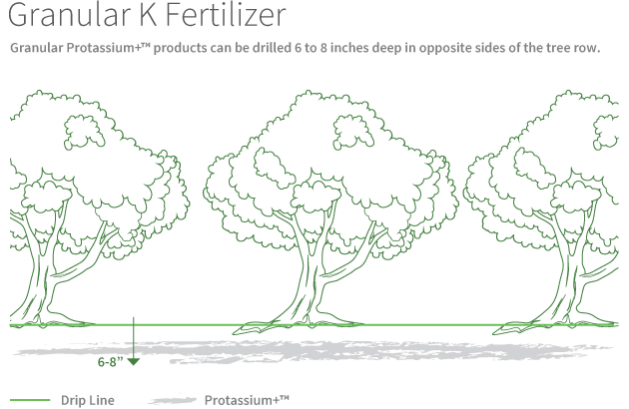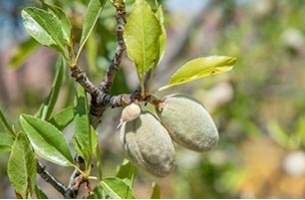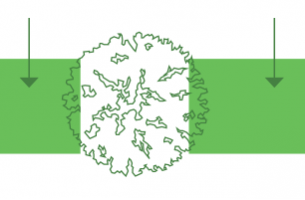Banding Can Enhance Fall K Application
A granular application of Protassium+® sulfate of potash (0-0-50-17S) in the fall is a great way to recharge potassium-depleted soils and prepare your almond trees for dormancy, but how and where the fertilizer is applied can determine both its effectiveness and your return on investment.
Fall-applied potassium (K) will be taken up by almond trees as long as their roots are active (soil temperature above 45° F). Ideally, you’ll want to place the fertilizer relative to the trees’ root zones where the nutrients will be most available for uptake.

University of California research has demonstrated that fall “maintenance” applications of potassium sulfate like Protassium+ SOP at 500 lbs/Acre, banded annually in the same location 4 - 5 feet out from the tree trunk on both sides of the tree row, maintained effective K levels1.
For best results, the fertilizer band needs to be in an area directly wetted by your irrigation system. Granular K fertilizer can also be drilled 6 to 8 inches deep in one or two bands on opposite sides of the tree row2.

Potassium is relatively immobile in the soil, so even if you apply it later in dormancy you’ll be ahead of the game. The K will have more time to get incorporated into the soil by winter rains, and then be readily available in the soil to feed trees’ active root systems the following spring — during the most critical periods of vegetative growth and fruit development.
Avoid the chloride.
While placement and timing of your fall-applied K are very important, so is your choice of product. Some potassium sources such as muriate of potash (MOP) are high in chloride: 47% Cl to be exact. That’s a potentially risky choice since almond trees are chloride sensitive. Protassium+ sulfate of potash is a better source because it’s virtually chloride-free and has the added fertility benefit of sulfate sulfur. These important factors make Protassium+ fertilizer the premium K source for your orchard.
1 “The Almond Doctor.” November, 2010. https://thealmonddoctor.com/2010/11/01/late-fall-a-time-for-potassium-soil-applications/
2 University of California, Davis. “Almond Fertilization Guidelines." http://geisseler.ucdavis.edu/Guidelines/Almonds.html




